 Int'l Snow Sculpture Art Expo in Harbin
Int'l Snow Sculpture Art Expo in Harbin Sichuan money wall for dividend payment
Sichuan money wall for dividend payment Li Na crashes Belinda Bencic in 2nd round at Australian Open
Li Na crashes Belinda Bencic in 2nd round at Australian Open
 Shocking moments when PLA's weapons open fire
Shocking moments when PLA's weapons open fire Famous Lanzhou beef noodles
Famous Lanzhou beef noodles Armed Police hold anti-terrorism drill in SE China's Xiamen
Armed Police hold anti-terrorism drill in SE China's Xiamen Harbin Int'l Ice and Snow Festival opens
Harbin Int'l Ice and Snow Festival opens 'Jin' named the word of the year by cross-strait netizens
'Jin' named the word of the year by cross-strait netizens Chinese scientific expedition goes to build new Antarctica station
Chinese scientific expedition goes to build new Antarctica station
Yasukuni is now a private park that hosts religious rites as well as festivals. To the left (south) of the main sanctuary, behind often-locked gates, is the Chinreisha, a small shrine which pacifies the souls of Imperial Japan’s enemies so that they will not cause trouble to the living. Encircling the property are a series of small memorial shrines created by various Japanese WWII military units including the notorious Kempeitai (Military Police).
There is also a modern museum, Yushukan, glorifying wartime deeds. The Yushukan displays memorabilia and technology of past conflicts, especially the “Greater Asian War” and related “incidents.” The narrative boasts of how Japan liberated Asia from the Western colonialists after the United States “tricked” Japan into the war. Little is said of the atomic bomb or defeat. The Shrine’s website states “the truth of Japanese history is now restored.”
In contrast, Arlington does not dwell on the glory of any war or push one interpretation, providing instead a neutral ground upon which people can mourn and reflect. Arlington’s website is subdued and factual. It reviews the rules for interment, outlines the property, and notes the famous people buried there. The grounds of Arlington National Cemetery, says the website, are to “provide a sense of beauty and peace.”
The spiritual center of Arlington is the Tomb of the Unknown, which consists of four crypts containing remains of an American from each of WWI, WWII, the Korean War and the Vietnam War. These represent both the collective sacrifice and grief of the country.
At Yasukuni, the unknown cannot be deified. Thus, in 1959, the Japanese government created near Yasukuni Chidorigafuchi a public park that contains a crypt for the ashes of thousands of unknown soldiers, sailors, and likely civilians who died in the Pacific War. Every year, coinciding with Memorial Day in the United States, there is an official ceremony attended by the Prime Minister, a member of the Imperial Family, and foreign ambassadors to add new ashes to the ossuary.
Most important, one of the criteria for those buried at Arlington is an honorable discharge. Those court-martialed, tried for war crimes, or convicted of a felony cannot be interred. This is not the case for Yasukuni. In addition to the fourteen convicted war criminals who were found responsible for carrying forward the Pacific War, there are thousands who violated both Japanese and international laws. Notable is Washio Awochi (sometimes spelled Awachi) a civilian manager of a comfort station in Batavia (Jarkarta) who was convicted by a 1946 Dutch wars crimes tribunal (Case No. 76) of forcing Dutch women to be Comfort Women (sex slaves). He died in a Batavia jail.
Yasukuni is about rejecting the judgments of the Tokyo War Crimes Tribunal. Many Japanese still believe that Imperial Japan should not be subject to the rules or values created by the West. The Tribunal is deemed “victor’s justice.” To emphasize this point, a large monument to the Tribunal’s Indian Judge Radha Binod Pal, who questioned the legitimacy its judgments, stands on a plaza at the Shrine.


 A 60-hour journey home
A 60-hour journey home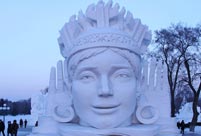 Int'l Snow Sculpture Art Expo
Int'l Snow Sculpture Art Expo Highlights of China's air force
Highlights of China's air force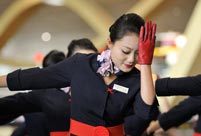 Airline crew stage flashmob dance at Kunming airport
Airline crew stage flashmob dance at Kunming airport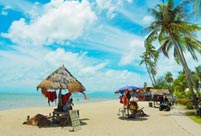 Top15 countries to retire to in 2014
Top15 countries to retire to in 2014 Hot supermodel's new photo album released
Hot supermodel's new photo album released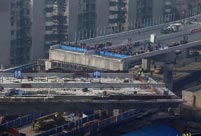 Asia's heaviest box girder finishes 'rotation' in Wuhan
Asia's heaviest box girder finishes 'rotation' in Wuhan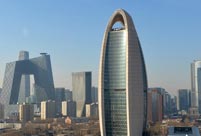 Completed facade of People's Daily new headquarters
Completed facade of People's Daily new headquarters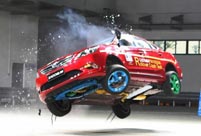 Chinese-branded car passes North America standard safety test for the first time
Chinese-branded car passes North America standard safety test for the first time Li Na beats Bouchard to reach Australian final
Li Na beats Bouchard to reach Australian final  Explore the sources of PM 2.5
Explore the sources of PM 2.5 Highlights of Chinese airborne troops'exercises
Highlights of Chinese airborne troops'exercises  'Living in ice house' competition held in central China
'Living in ice house' competition held in central China  Chinese figure in Oscar nominations
Chinese figure in Oscar nominations  Top ten aerospace events in China 2013
Top ten aerospace events in China 2013Day|Week|Month